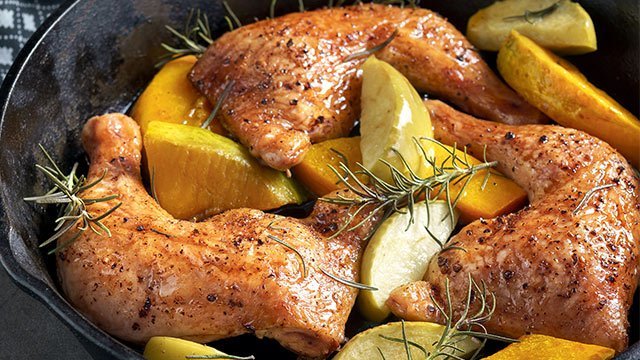Do you often see photos of beautifully roasted chicken and think, “I want to make that!” It has become a vivid picture of what meal showstoppers must look like. But some still find the oven an intimidating kitchen appliance and struggle to make the most out of it.
Conventional Or Convection Ovens?
Both ovens have the same appearance and can be either gas or electric. Convection ovens distribute heat via fans, ensuring that the air circulates evenly throughout the device. The heat produced by a convection oven is consistent because of this. As a result, conventional ovens can have pockets of air that are warmer or cooler than the temperature displayed on the temperature display indicator. Chefs open the traditional range halfway through cooking time to turn the roasting pan or cookie sheet around to achieve this result. Using this method, you can avoid having food in the back of the oven burn while the food near the front of the oven is still undone.
Professional cooks in particular like convection ovens because they cook food evenly and cook it as much as 25 percent faster than a conventional oven. If you are used to cooking in a traditional oven and swapped it for a convection oven, you'll need to compensate for this faster cooking time. Cooking experts suggest checking the food in the oven about 10 minutes before its recommended time.
It’s always best to be friends with your oven and be really familiar with it to understand its peculiarities. Use an oven thermometer to get a more accurate oven temperature reading. The ideal baking temp for chicken is around 170 for 50 minutes, 25 minutes on each side, which means flipping the chicken over and rotating the pan to ensure even cooking.
[ArticleReco:{"articles":["15427","15312","17256"]}]
What Roasting Means
Roasting is direct exposure to dry heat, such as cooking (meat or other items) on a spit. Roasted or baked chicken is a popular staple at homes and is easy to do.
Consider the following tips when cooking roasted chicken:
- • Start with a good brine solution. Brining is the process in which chicken (or other meat) is submerged in a salty liquid (a "brine") and allowed to absorb the seasonings in the brine to impart flavor, tenderize the flesh, and provide moisture to ensure that the chicken remains juicy when cooked. Brine around 12 hours or overnight for best results.
- • A basic brining solution just includes salt and sugar but to level it up, flavor your water with lemongrass or tanglad, finely chopped in the food processor, and use this strained liquid as the base of your brine.
- • Step a notch higher by injecting your brine into the chicken meat to ensure flavor penetration, specifically the chicken breast, which tends to dry.
- • Pat your chicken dry before roasting. Drying the skin ensures it will crisp up, but nowhere near what frying can do. Make a butter garlic spread and lift the chicken skin to apply the paste between the skin and the meat. The aroma will be glorious and the skin will be crispier.

- • When baking, use a rack, so the juices don't settle on the chicken but on the tray. If a rack is unavailable, lay garlic, onions, celery, carrots, or other aromatics as a bed for your chicken; the juices of the aromatics will get infused with the drippings making a fantastic gravy. Remember to pour some reserved brine, around 1 cup, into the tray because the aromatics might burn without any liquid.
- • Tucking the chicken's wings and legs into its body using kitchen twine is trussing; this ensures even cooking because it is more compact. Besides preventing the tips of the wings and drumsticks from burning, trussing a chicken gives the finished dish a more aesthetically pleasing appearance.
- • You can opt to stuff your chicken cavity with herbs or lemon. It adds flavor and makes the meat more moist. Just remember to completely cook the stuffing and the chicken to the recommended internal temperature of at least 160 degrees F or 71 degress C to ensure both the stuffing and the chicken are safe to eat.
- • Change your chicken tray orientation after around 10-15 minutes of roasting to make your chicken brown evenly. You may not need to do this if you're using a convection oven with the fan on.
- • Poke the fleshy part of your chicken with a kitchen thermometer. A reading of 165 degrees F means a cooked chicken. (However, you may want to remove your chicken before it reads 165 because of carryover cooking.)
- • Consider baking a side dish to accompany your chicken. It maximizes oven use, and you get to enjoy a side dish.
- • After baking, make fantastic gravy using the drippings.
Baked whole chicken is a popular festive treat, each family has its guarded recipe. Here are some recipes to try for the holidays:
[RecipeImp:{"recipes":["2770","4155","5016","5153"]}]
***
